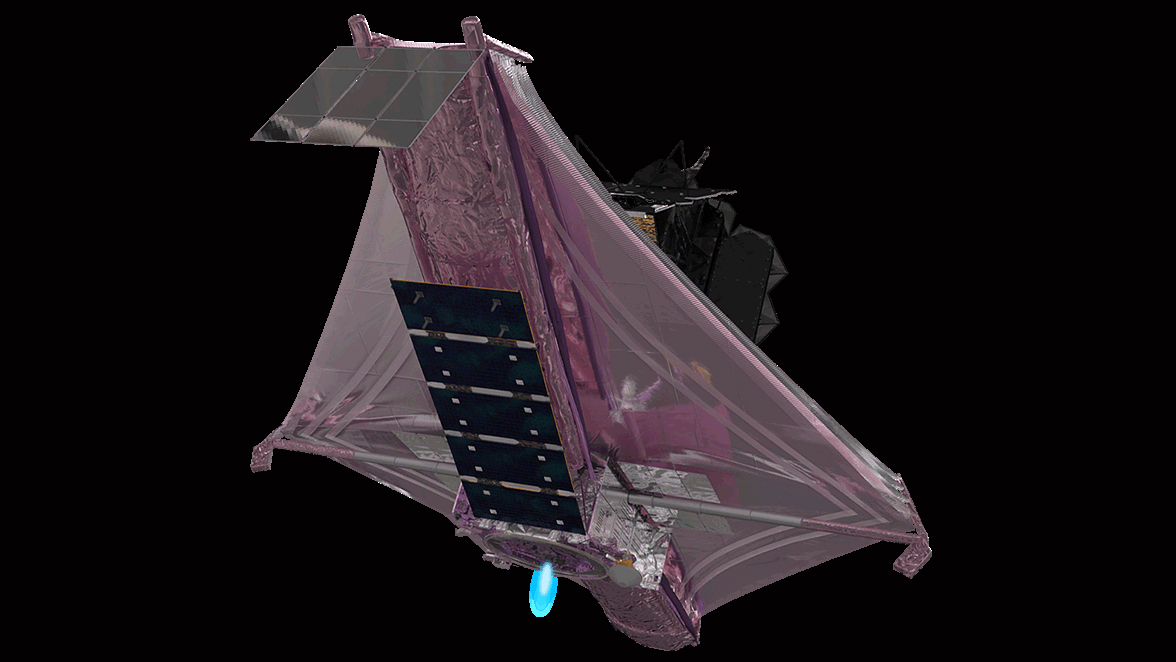For scientists, relief and joy abound as James Webb Space Telescope completes monthlong journey
Webb is expected to start science operations about five months from now.

NASA can breathe a $10 billion sigh of relief.
The agency's James Webb Space Telescope arrived safely at its ultimate destination Monday (Jan. 24), in great health and carrying even more fuel than expected after several deep-space engine burns.
Webb's arrival at the Earth-sun Lagrange Point 2 (L2), roughly one million miles (1.5 million kilometers) from our planet, marks a big step toward the observatory's highly anticipated science campaign, officials with NASA and prime contractor Northrop Grumman said on Monday.
Up next are five more months of cooling down the telescope, precisely aligning its 18 primary mirror segments and getting its science instruments ready to study exoplanets, gaze at the universe's first stars and galaxies and much more. Mission team members said they can't wait to get started.
"We're a month in, and the baby hasn't even opened its eyes yet. But that's the science that we're looking forward to," Jane Rigby, Webb operations project manager at NASA's Goddard Space Flight Center, said during a media teleconference on Monday.
Live updates: NASA's James Webb Space Telescope mission
In photos: The Christmas launch of NASA's James Webb Space Telescope

Rigby gave a quick tour of the main topics of the 330-plus science investigations that Webb will perform during its first year of work, such as seeking the first generation of galaxies that formed after the Big Bang, probing planetary atmospheres and assessing them for habitability and doing deep studies of "dark parts of the sky" only visible in infrared light.
Get the Space.com Newsletter
Breaking space news, the latest updates on rocket launches, skywatching events and more!
According to NASA, Webb's main mission focuses on four main areas: first light in the universe, assembly of galaxies in the early universe, birth of stars and protoplanetary systems and planets (including the origins of life.)
Webb's forthcoming work is also expected to serve as a public engagement opportunity, like that of its predecessor, the Hubble Space Telescope, which is still taking stunning photos more than 30 years after its launch. Meanwhile, scientists are eager to get their turn at Webb and to get their hands on data, which will be regularly released for open science initiatives.
Science is now coming more sharply into focus as Webb has completed most of its complex engineering milestones, although commissioning is not yet finished. Webb deployed its massive sunshield and its mirrors earlier this month, and its super-efficient journey to L2 left it with far more fuel than originally expected.
"We have plenty of fuel," Keith Parrish, Webb observatory commissioning manager at NASA Goddard, said during Monday's press conference.
Webb's initial lifespan (largely based on fuel consumption calculations) was estimated at 10 years, and while precise measurements are ongoing, the team says the telescope has enough fuel now to operate for about 20 years.
"I think the astronomical community is thrilled. The folks who built and designed Webb, and everybody [else], is just thrilled by that final number," Parrish said.
He even floated the possibility of somebody in a decade or two thinking about a deep-space refueling if Webb is in good health: "People are creative," Parrish said, noting that advances in spaceflight are accelerating by the year. "Who knows what some future folks may want to do with Webb, and [maybe] visit it and do something?"
Follow Elizabeth Howell on Twitter @howellspace. Follow us on Twitter @Spacedotcom and on Facebook.
Join our Space Forums to keep talking space on the latest missions, night sky and more! And if you have a news tip, correction or comment, let us know at: community@space.com.

Elizabeth Howell (she/her), Ph.D., was a staff writer in the spaceflight channel between 2022 and 2024 specializing in Canadian space news. She was contributing writer for Space.com for 10 years from 2012 to 2024. Elizabeth's reporting includes multiple exclusives with the White House, leading world coverage about a lost-and-found space tomato on the International Space Station, witnessing five human spaceflight launches on two continents, flying parabolic, working inside a spacesuit, and participating in a simulated Mars mission. Her latest book, "Why Am I Taller?" (ECW Press, 2022) is co-written with astronaut Dave Williams.









